Leica 50mm F1.0 Noctilux-M Review:
Note from Admin: I’d like to thank Bob Gramegna from the Leica Boutique at Bergen County Camera for loaning me the 50mm F1.0 Noctilux-M. It has been a brutal winter, and therefore, hard to take pics but he was kind enough not only to loan me this lens but also to let me borrow it for a VERY long time to write you all a proper review!
Regardless of manufacturer, the 50mm Noctilux is one of the most famous and highly regarded lenses in the photographic world. For many, it is a dream lens, mythical even. Over the years, there have been several different versions of the Noctilux but each one is special and each one has become a legend in its own right. The version in this review is the Leica 50mm F1.0 Noctilux-M, a Mandler classic that has been discontinued but still considered a very special lens. While the price of admission is still high, this version can be found for considerably less than the current 50mm Noctilux F0.95 which only adds to the F1.0’s desirability and makes entry into the Noctilux world a little easier.
Leica 50mm F1.0 Noctilux-M Build Quality:
The Leica 50mm F1.0 Noctilux-M was in production from 1993-2008, so it’s definitely a lens that’s been around for a few years but it does not in any way feel like an older lens which is a testament to its superior build quality. At 630g, the 50mm Noctilux is both heavy for a Leica lens and as solid as it looks. The construction of this lens is simply world class and feels like it will last to the end of time. Like other Leica lenses, the aperture ring clicks solidly in half stops and stays securely in the chosen setting. There is absolutely no play. The focus ring operates very smoothly but it has a long throw and it’s also tight; however, this is what you want in a lens of this caliber because it will help you focus more accurately, especially at F1.0. It’s a big lens for an M camera but not large if you compare it to other DSLR lenses. However, it just feels so dense and solid for a lens of this size that it gives you this impression that it’s one of the most well built lenses money can buy, which I don’t doubt.
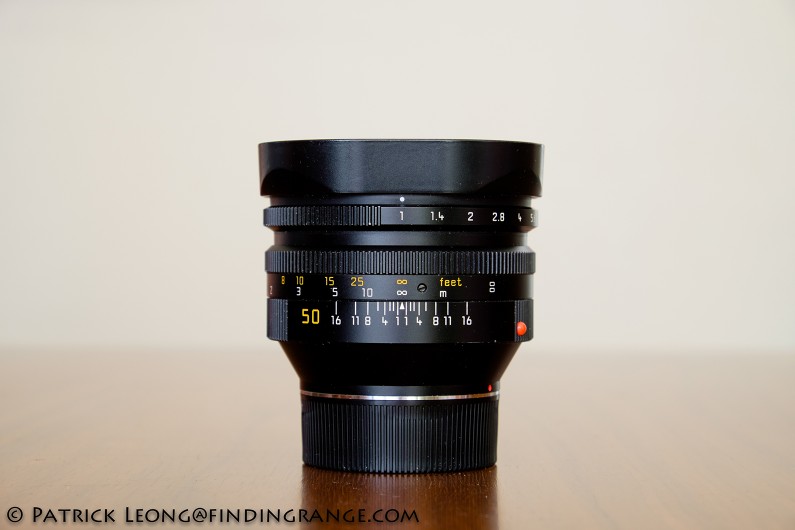
↑ The Leica 50mm F1.0 Noctilux-M.
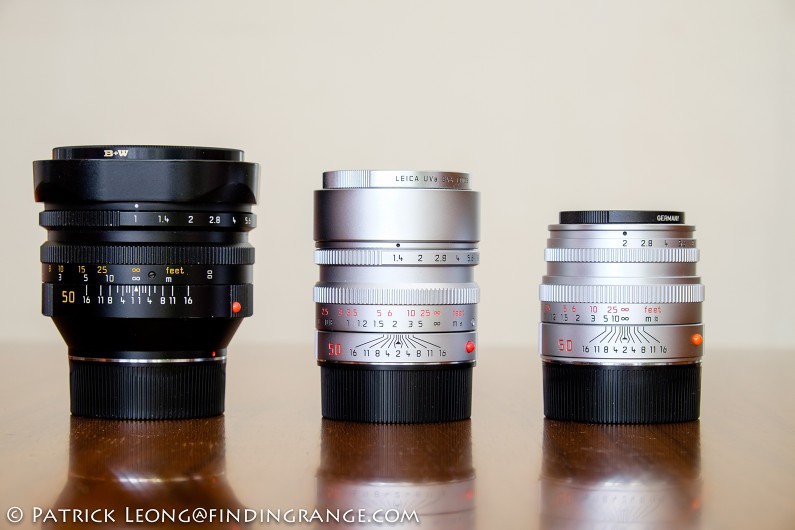
↑ Size comparison: 50mm F1.0 Noctilux-M vs. 50mm F1.4 Summilux-M ASPH vs. 50mm F2.0 Summicron-M.
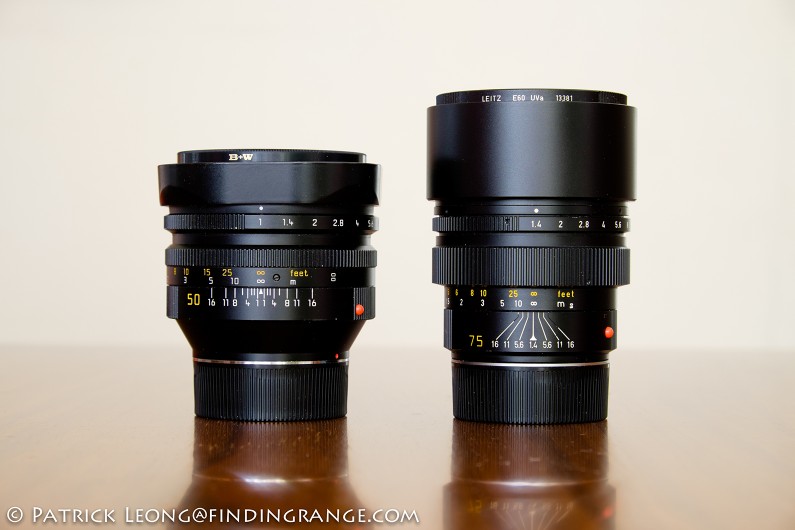
↑ 50mm F1.0 Noctilux-M vs. 75mm F1.4 Summilux-M.
This version of the 50mm Noctilux F1.0 comes with a retractable lens hood, which is very convenient. I’m usually a big fan of retractable hoods because I don’t like carrying extra items and taking the extra step to clip on my hood. Also, since it’s retractable, it’ll take up less space in my bag but I’m a little disappointed that it is made out of plastic. The rest of this lens is nearly all metal, so it would’ve definitely been nice to see a metal lens hood. My 75mm Summilux is built around the time the 50mm Noctilux F1.0 was in production and it comes with a solid metal hood, so I was surprised the Noctilux didn’t come with one. Plus, once it’s fully extended, there’s no way of locking it in place. However, this is an older out of production lens, so I can’t really fault it for these two issues, especially since Leica has made almost all their current lenses with retractable hoods lockable and out of metal. For instance, when I extend the metal hood on my 50mm Summilux ASPH, a simple short twist will lock the hood in place.
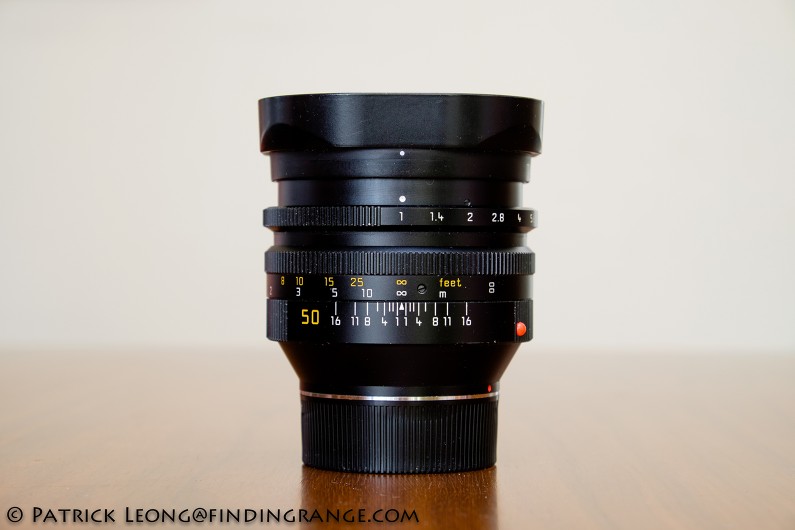
↑ The 50mm Noctilux with its lens hood extended.
Overall though, this is seriously one of the best built lenses I’ve ever used. I have no doubt in my mind that this lens can handle pretty much anything in even the roughest and toughest environments. The price of any Noctilux is high but I think if most people actually see one and try one out they will see why it costs so much to buy one. There’s no way to get this kind of build quality for cheap and this goes for all Leica lenses. Not that I want to pay extra but I’m actually a bit surprised these lenses don’t cost more. Plus, keep in mind that one does not just pay for the excellent construction and materials used to build this lens; one also pays for the excellent optics that accompany this impressive build quality, which I will discuss later in this review.
Leica 50mm F1.0 Noctilux-M Size:
As most of you know, the 50mm Noctilux is large, which is expected for an F1.0 lens. For those who aren’t sure if they can live with a lens of this size, here’s my experience with it. I borrowed this lens from The Leica Boutique at Bergen County Camera twice. The first time I borrowed this lens I wasn’t a huge fan of it because it felt heavy on an M camera. It was bulky and cumbersome.
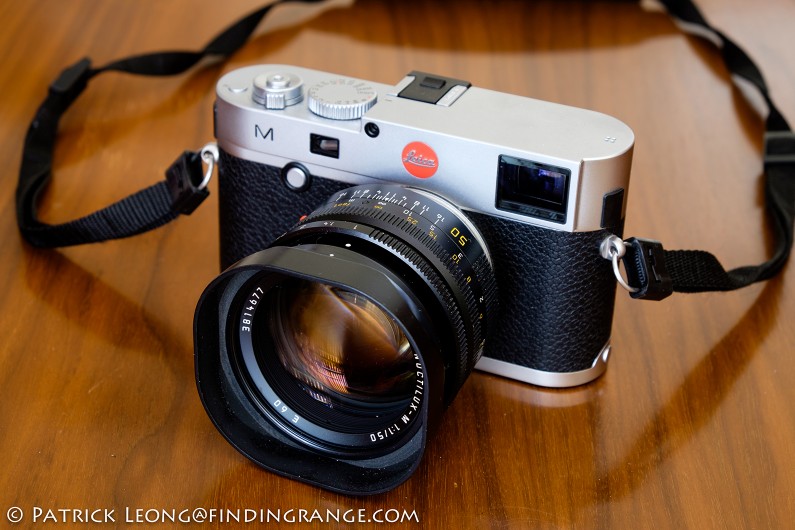
↑ Leica M Typ 240 with the 50mm F1.0 Noctilux-M.
But when I borrowed the 50mm Noctilux the second time for this review, I made it a point to only use this lens, and I’m happy to say that I got used to it after a while. In fact, I find the lens actually balances nicely with an M body. The camera and lens combination have a nice feel to it. I got so used to having the Noctilux on my M 240 that when I returned it and attached my 35mm Summicron ASPH, I thought I forgot to put the battery in my M because it felt so much lighter. So my advice to you is if you’re considering the Noctilux, don’t let the weight or bulk issue deter you from it because I believe all the benefits of this lens vastly outweigh the negatives. It’s a lens that you can definitely live with if you give it a chance. This lens has seriously become one of my favorite Leica lenses after my time with it.
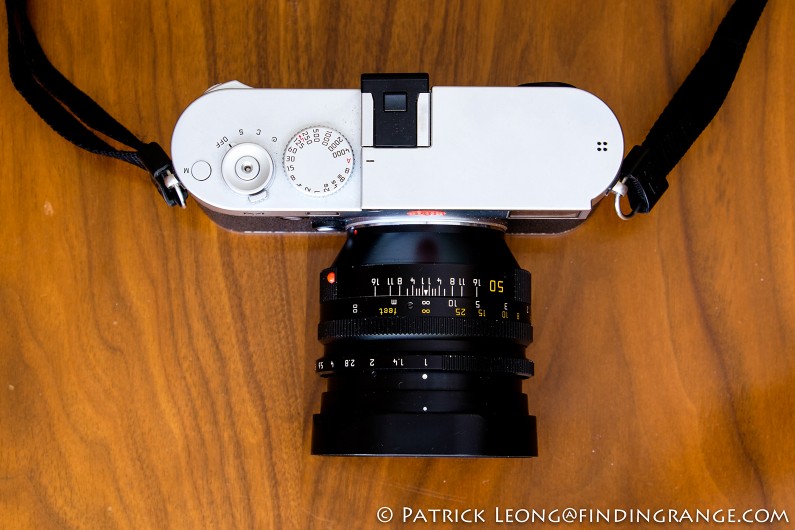
↑ Top view of the Noctilux on the M 240 to give you an idea of the size of this lens.
Leica 50mm F1.0 Noctilux-M Image Quality:
In terms of image quality, the Leica 50mm Noctilux F1.0 is simply superb. Because of its large aperture, the Noctilux is perfectly well suited for night photography and poorly lit conditions. It’s what the Noctilux is built for and it does its job extremely well. Often times in these low light conditions, there may be bright lights like street lights in the frame but I found the Noctilux to be highly resistant to reflection and flare. It also renders contrast quite well, especially at F1.0, so it’s able to distinguish the slightest differences in color and detail, which is a very important feature in poor lighting conditions when seeing any detail is a difficult task. It does vignette quite a bit at F1.0, which is to be expected for a lens like this but for the most part, it’s not a problem for the kind of pictures usually taken in low light situations. Vignetting does significantly decrease around the mid aperture range but I still saw very slight vignetting at F5.6; however, the slight vignetting is insignificant enough that most will probably not even notice it.
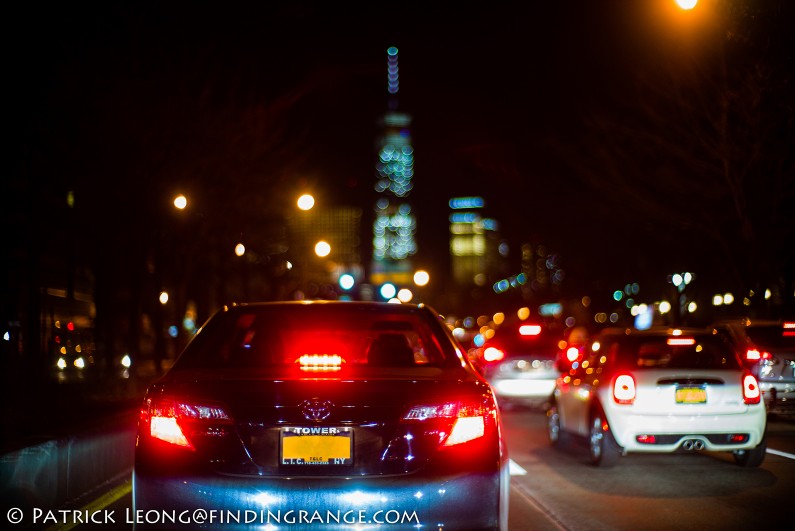
↑ Photo of the WTC through a car windshield. The Noctilux vignettes at F1.0 but as you can see, it’s not such a problem in low lighting situations.
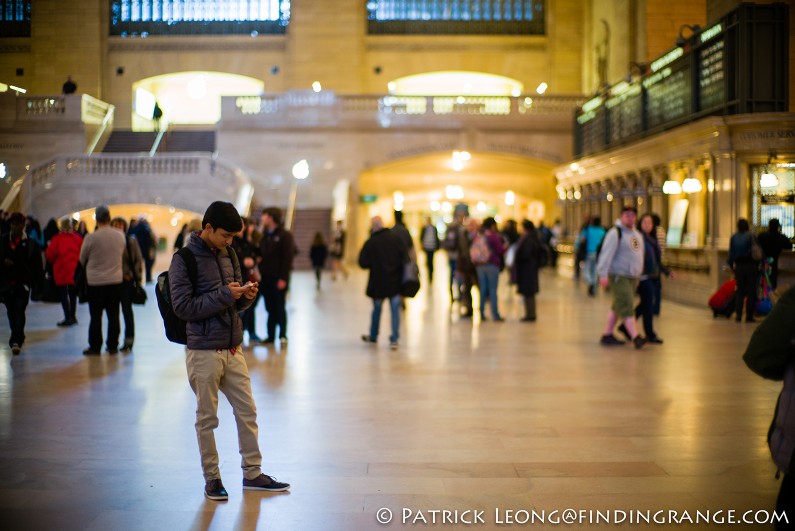
↑ With it’s fast F1.0 aperture, the 50 Noctilux is great for indoor shots.
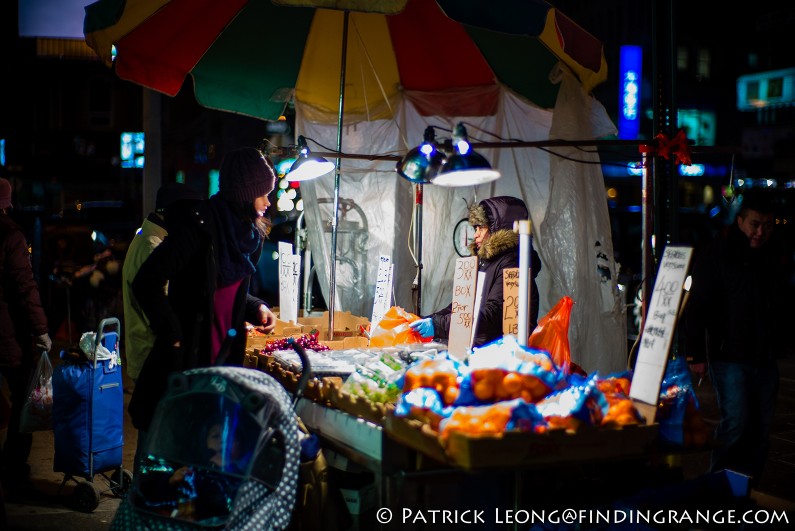
↑ Another reason it’s great to have a lens this fast is you can shoot with a lower ISO setting.

↑ Chelsea Market.
While the F1.0 aperture is an important feature for low light conditions, it also helps the photographer create some of the most unique images out there. This lens isn’t as technically perfect as the newer 50mm F0.95 Noctilux-M but I truly believe its imperfections are actually characteristics that help make this lens particularly special in its own way. To me at least, I feel like this Noctilux F1.0 has a different look than the F0.95 version. As to which one is better, I think it really comes down to personal tastes. If you ask me, I would have to say that I prefer the look that the F0.95 produces (plus I like the hood better) but that does not mean I do not appreciate what this F1.0 version is able to achieve. I would be completely happy with this lens.
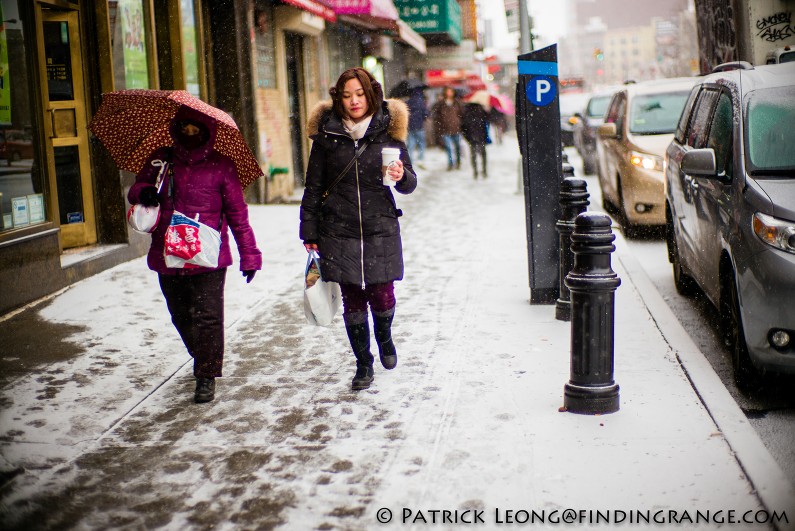
↑ It’s been very cold in New York City lately. We’ve even been getting some single digit days.
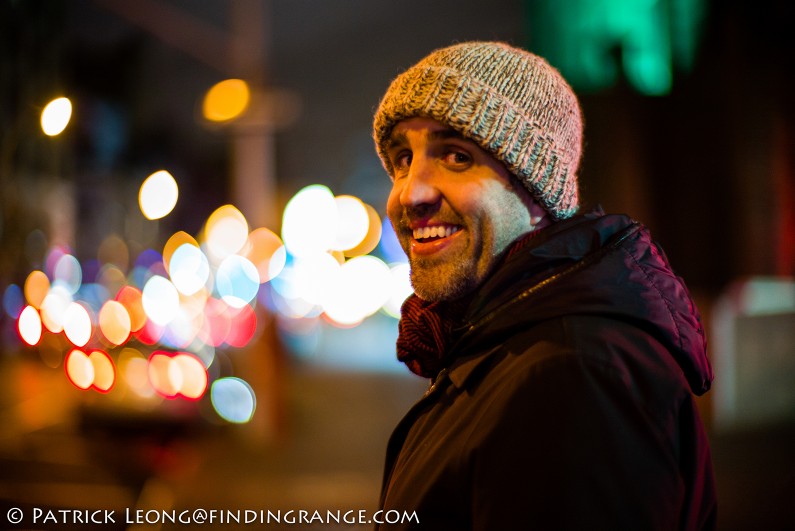
↑ Street lights in the background.
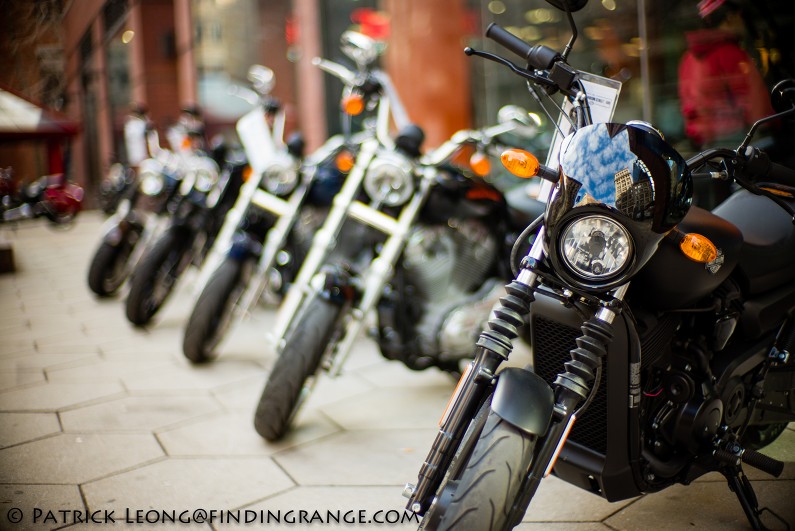
↑ The Harley Davidson Shop.
The shallow depth of field or bokeh as some would say from this version of the Noctilux is smooth, inviting, intoxicating, it has a little bit of that classic look to it, and most importantly, it has an otherworldly beauty that makes photos so distinctive. The photos are also so three dimensional. All the positive and negative aspects of this lens seem to come together in harmony and help it create images that are truly world class and special. For instance, the vignetting at F1.0 actually seems to add to the image instead of being a detriment to it. I had this lens on loan for quite a long time but there’s so much more to it that I wish I had even more time (and better weather) to explore it’s full potential. I truly enjoyed every moment I was lucky enough to spend with this lens.
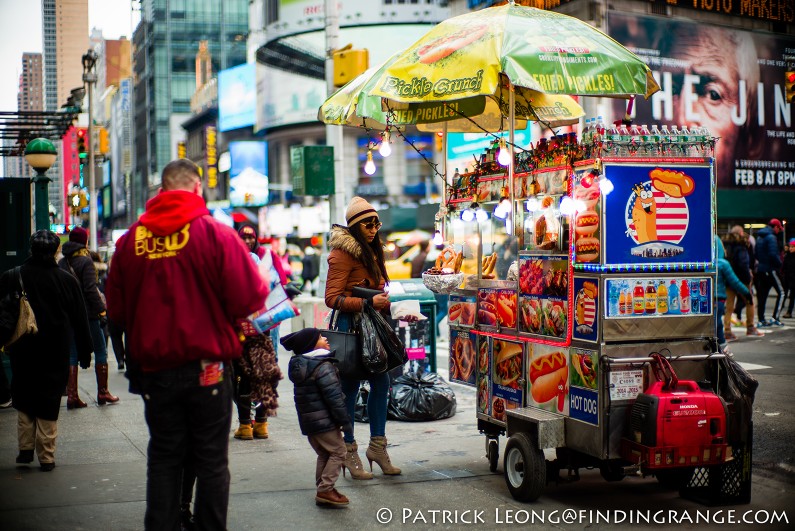
↑ Times Square.
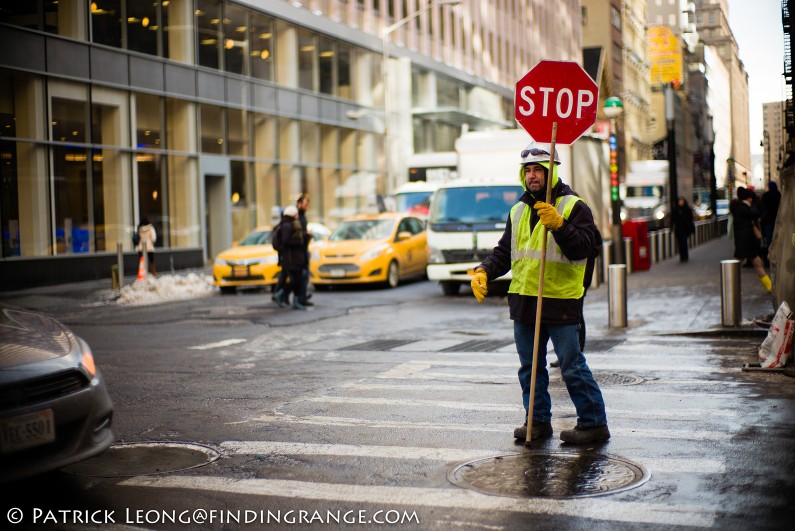
↑ I love how three dimensional the photos appear when taken at F1.0.
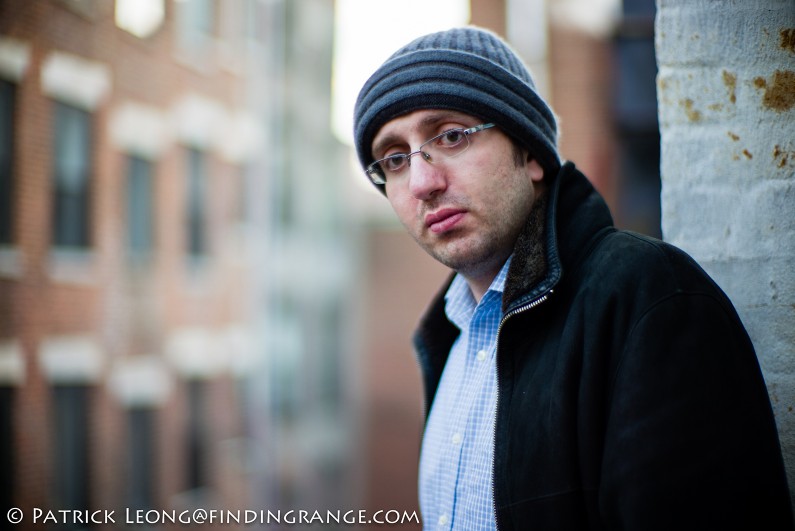
↑ I find the bokeh is ultra smooth.
Another point worth mentioning is not only do you get a distinctive looking bokeh, the 50mm Noctilux is also exceedingly sharp at its widest aperture. If you’re not getting sharp images at F1.0, you either need some calibration work or maybe a bit more practice with focusing this lens. Speaking of focusing, once you get the hang of it, it’s actually pretty quick and easy to focus the Noctilux. It just takes practice and commitment.
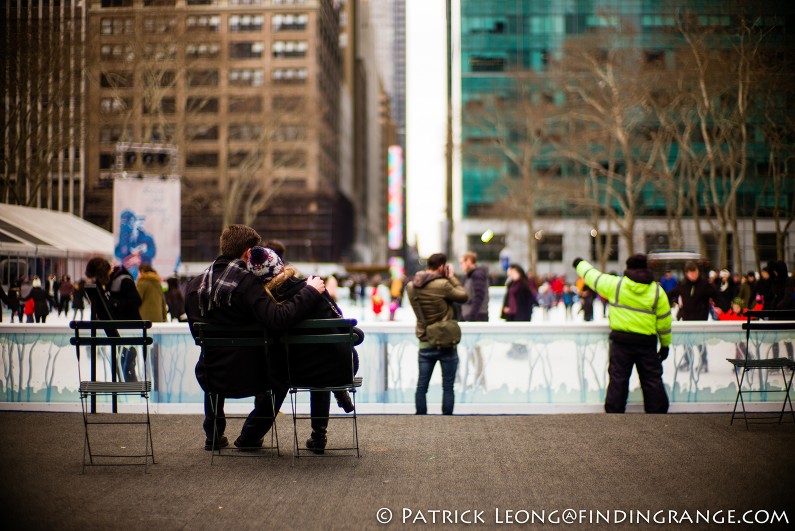
↑ Bryant Park.
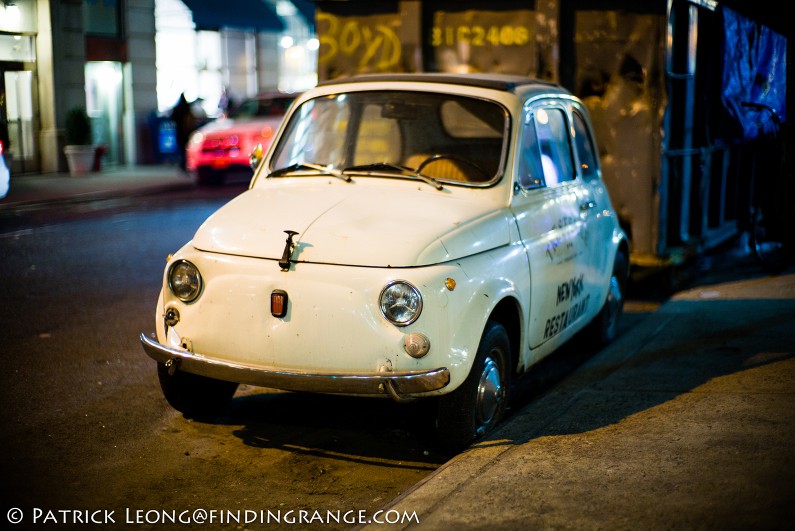
↑ I love seeing these old Fiats. They’re so much more compact than the new ones.
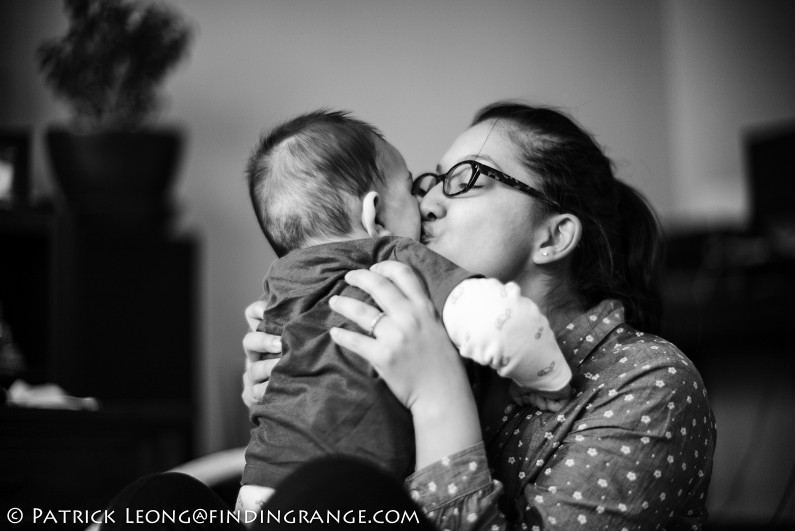
↑ I don’t shoot as many wide aperture shots as I used to but I have to admit that it is quite addicting with the Noctilux. I really love the bokeh from this lens.
I experimented focusing with the EVF and the Leica 1.4x Magnifier but I am happy to say that I did not end up needing any of those focusing aids. In the beginning it can be difficult because you have the long focus throw, the tight focus ring, and the fact that you have to nail the focus with such a shallow depth of field. But I think what made it really easy for me was I just put complete faith in the rangefinder of my camera. I trusted the fact that it was accurate, and never second guess it, which I think you really have to do with a lens of this caliber.
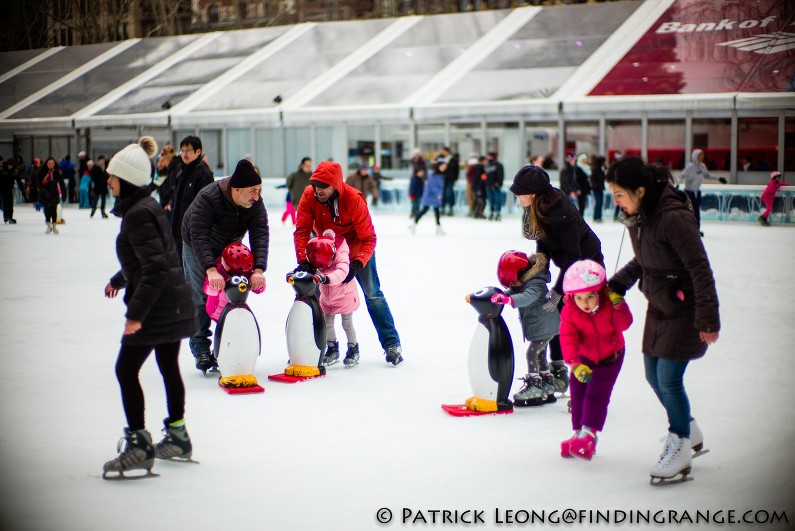
↑ Ice skating at Bryant Park.
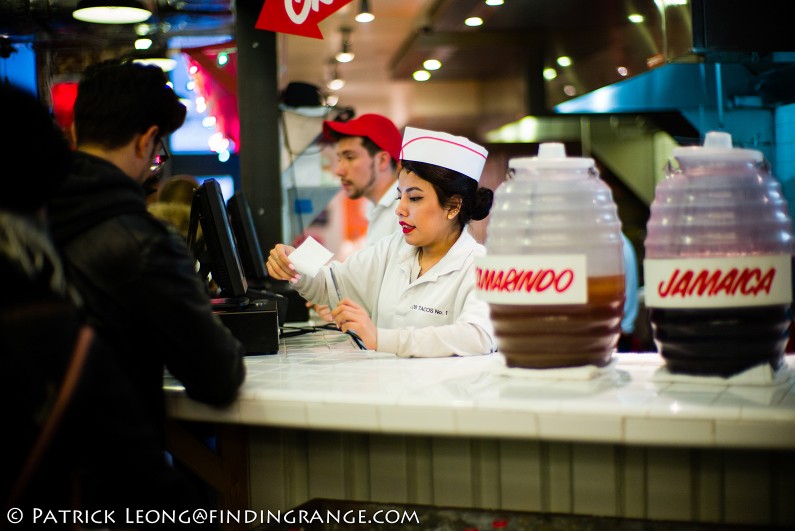
↑ I think the bokeh from the 50mm Noctilux does set a distinctive mood.
Leica 50mm F1.0 Noctilux-M at Smaller Aperture Settings:
While the F1.0 aperture will draw many to this lens, it’s not the only characteristic that makes the 50mm Noctilux F1.0 such a fantastic lens. It actually performs superbly when stopped down making this lens extremely versatile if you don’t mind the extra weight and bulk. I was pleasantly surprised. Some of the older pre-ASPH high speed lenses were primarily designed to performed at their best near or at their widest aperture settings. For instance, the 50mm Summicron is technically a better lens than the 50mm Summilux pre-ASPH if you are after maximum resolving power.
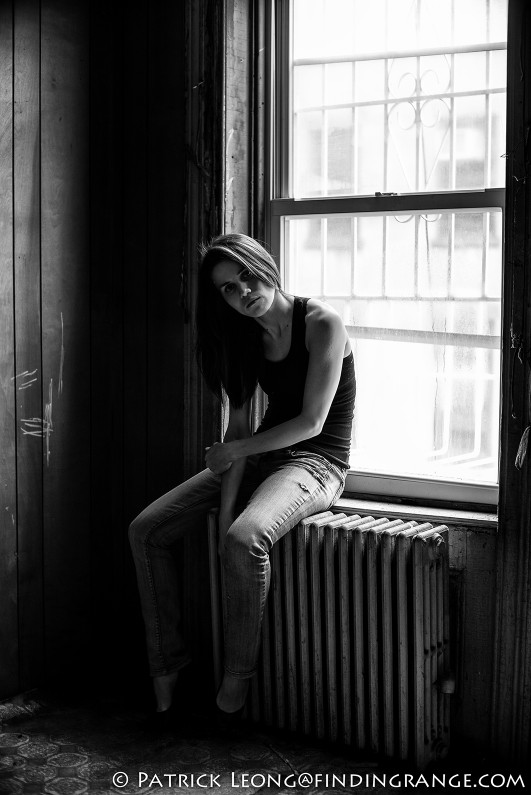
↑ I believe this photo was taken around the F2.8-4 range.
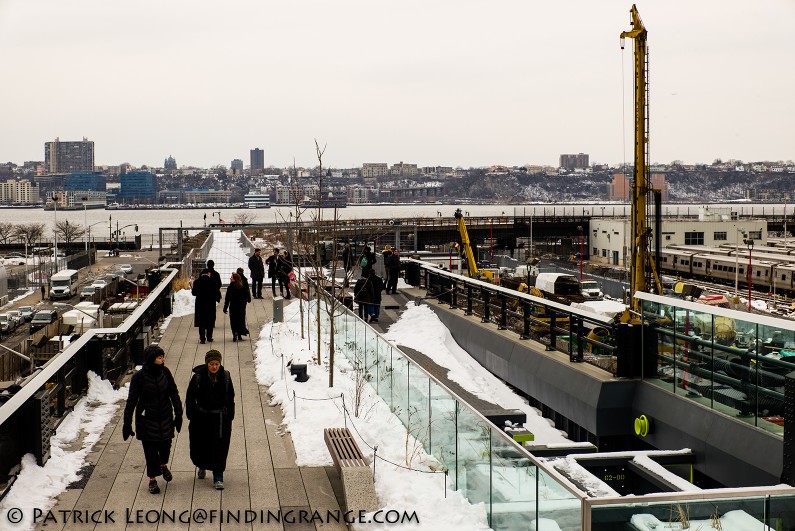
↑ This photo was taken at F8.
But the 50 Noctilux F1.0 is a lens that performs quite well throughout the aperture range. As you stop this lens down, it’s tack sharp all the way into the corners and edges. Photos still have that three dimensional feel to them. As I mentioned before, vignetting also significantly decreases as you stop down. The 50mm Summicron still has a slight edge in resolving power over the Noctilux, especially at the smaller F stops but it’s quite an impressive feat of engineering that the Noctilux performs so well at smaller apertures considering its large aperture capabilities and when this lens was originally designed. As I said before, production of this lens started in the early 1990’s but it was designed even longer ago. In other words, this lens will essentially perform like any other “normal” lens in the modern age with the added benefit of it’s F1.0 aperture, and therefore, it can serve as your only 50mm lens.
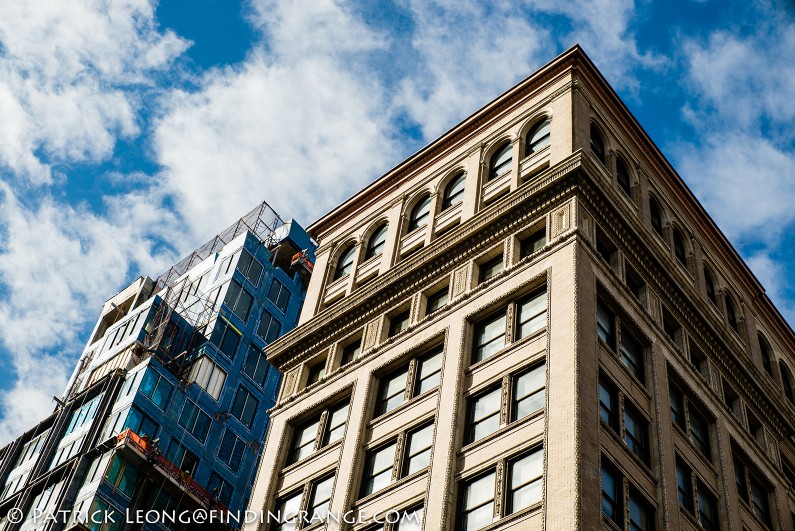
↑ This photo was taken at F5.6. Notice that it’s sharp all the way into the corners.
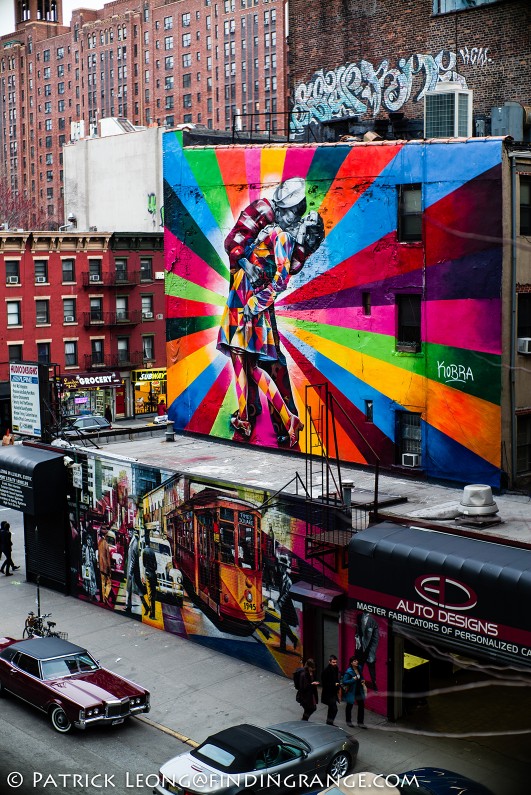
↑ Here’s another photo taken at F5.6. There is slight vignetting but nothing major.
So, if you decide to stick with the Noctilux as your only 50mm, it’s completely possible. There are a lot of people that do it. There are even people who used the Noctilux exclusively and nothing else. This lens was designed in the film era but it works perfectly on a digital M. For me though, if I bought the Noctilux I would probably keep one of my other 50mm lenses for several reasons. First off, I wouldn’t be using F1.0 all the time, and since the 50mm is my favorite focal length and one of my most used focal lengths, I would want something more compact and easy to lug around all day. Also, my favorite lens from any manufacturer is the 50mm Summilux ASPH. I absolutely love everything that comes out of this lens. In addition to the superb image quality, the Lux is almost as compact as the 50mm Summicron, and it still has an F1.4 aperture making this lens extremely versatile. To me, this lens is perfection. It’s the only lens I know for sure that I will never trade in or sell.
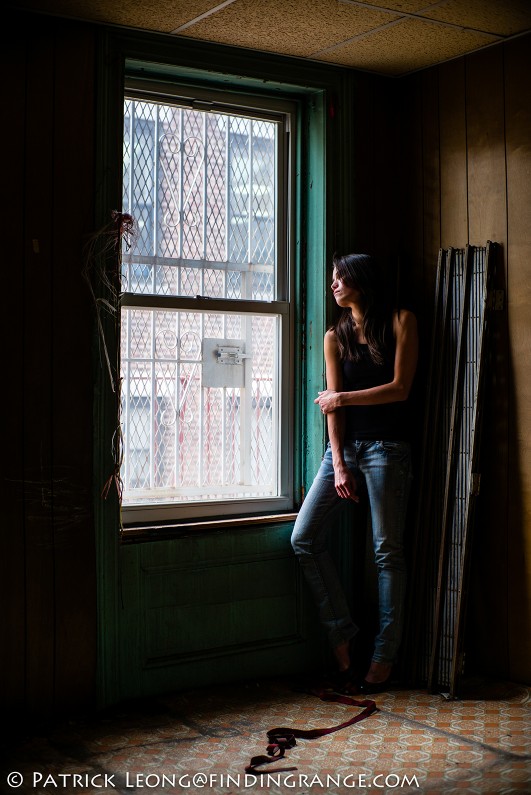
↑ Here’s another photo taken in the F2.8-4 range.
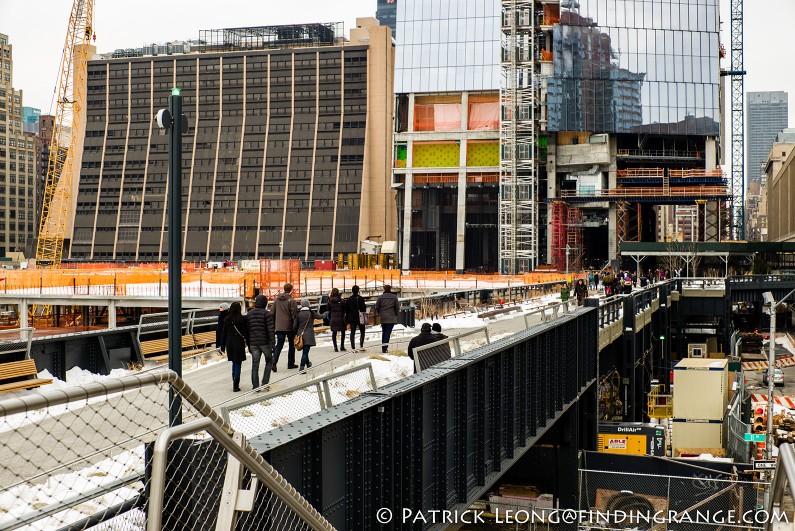
↑ Here’s one more image taken at F8.
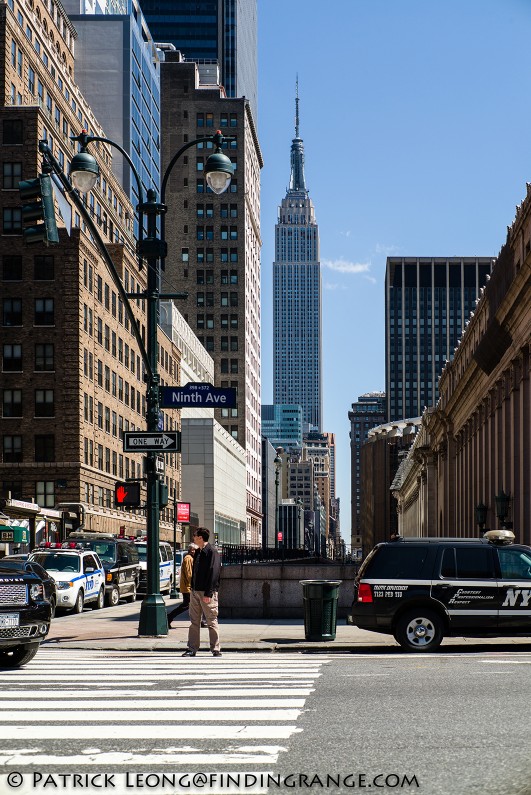
↑ Another photo taken at F5.6.
ND Filter For the Leica 50mm F1.0 Noctilux-M:
If you’re planning to use the 50mm Noctilux at F1.0 during a sunny day, it is perfectly fine but you will 100% need to buy an ND filter. Even cloudy days may often times require an ND filter. I was using a B+W 3 stop ND filter but I probably would’ve used even a 6 stop ND filter if I had one. This lens just sucks in so much light.
Leica 50mm F1.0 Noctilux-M Verdict:
The Leica 50mm Noctilux F1.0 is simply one of the best lenses that I’ve ever used. The lens is so well built that it feels indestructible, and the world class optics will help you produce beautiful images. The beauty of the 50mm Noctilux is it’s not just another typical fast lens; it can be used throughout the aperture range making the 50mm Noctilux F1.0 extremely flexible, which I believe only adds to this lens’ already high desirability.

↑ Everyday has been quite cold here as the picture suggests.
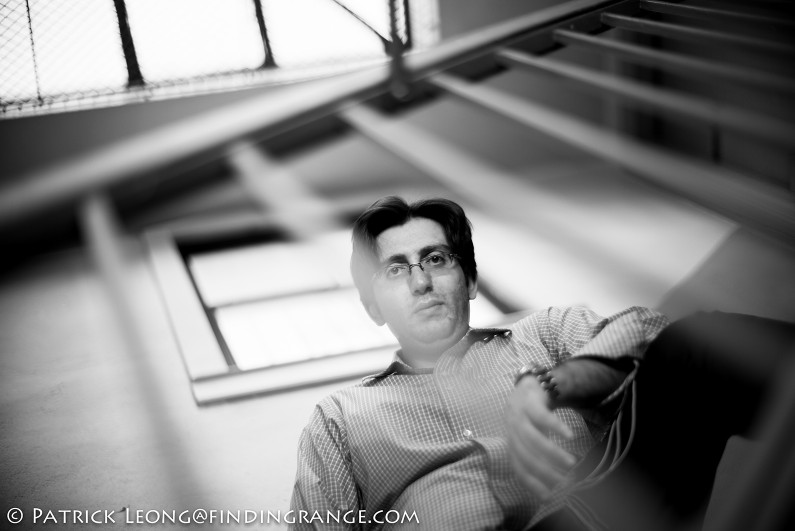
↑ Again, I really love the shallow depth of field yet as you can see, the subject is tack sharp.
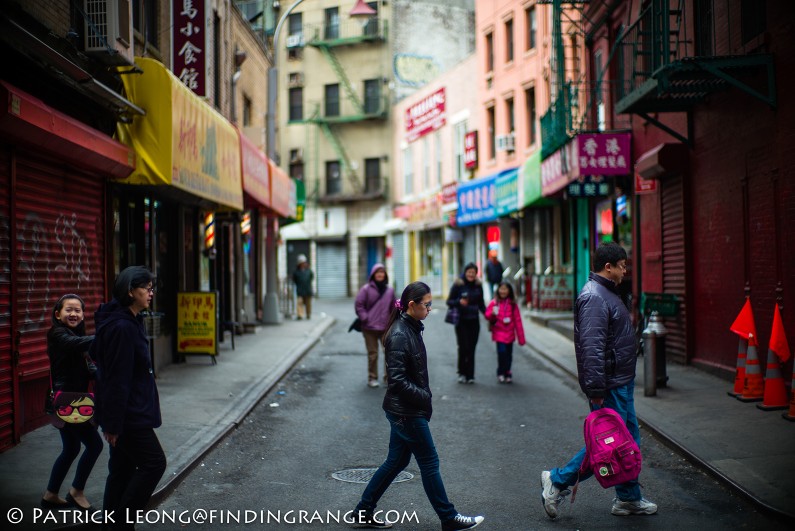
↑ This photo was taken the first time I borrowed the 50mm F1.0 Noctilux.
I think to truly get the most of out the Noctilux, one has to use it a lot. Like I said earlier, when I first started using this lens, I couldn’t stop thinking about the size and how cumbersome it was but when I finally decided to commit to using it, I found myself enjoying the experience quite a bit. One needs time to get used to the operations of this lens and how it “sees” the world. It takes practice and a lot of commitment but in the end, it’s worth it. I review a lot of different lenses but there are only a few that I end up buying. If things go as planned, the Noctilux will probably be my next Leica lens purchase.

↑ The new section of the High Line in Chelsea.

↑ We’ve been getting a lot of ice and snowstorms this year.
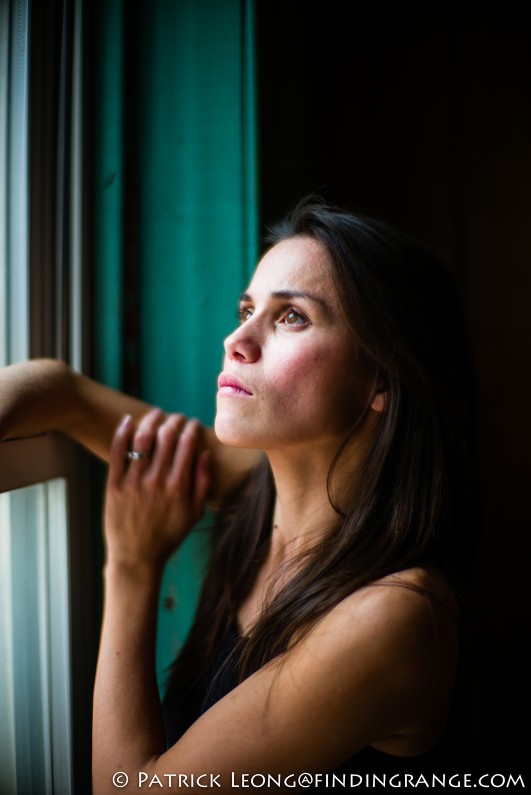
↑ One last shot demonstrating the shallow depth of field effect at F1.0.
But I already spent most of my review telling you how great optically this lens is so I’ll just leave you with one more thought. I don’t buy a lens like this for near perfect technical specs. Don’t get me wrong; it’s definitely wonderful that this lens can perform so well but for me, I buy a lens like this because it has a truly unique character. To me, the combination of the excellent optics, the solid construction, and the distinctive look that this lens can create are what make the 50mm Noctilux F1.0 one of the best lenses that I’ve ever used. This lens is truly special and seriously a dream lens for me. It’s a classic and I can certainly understand how it has reach its legendary status. When I think about the 50mm Noctilux F1.0, I look at it this way: in the end all the technical stuff doesn’t really matter because the bottom line is this lens produces truly one of a kind images and to me, that’s all that counts.
Thanks for taking the time to read my review! If you’re looking for a 50mm Noctilux or any Leica gear, contact Bob at the Leica Boutique in Bergen County Camera (800)-841-4118. He’ll help you find whatever you need (great stuff on their used equipment list). BCC’s customer service is the best no matter what you’re buying. They’re interested in forming a relationship with the customer and therefore, also offer fantastic dealer support when you have gear trouble. I do not get paid or was I told to say any of this when I borrowed this lens. Bob is a really nice guy; whether or not I was going to write this review, he was going to lend me this lens. I just believe stores like this deserve credit, and just so you know, my family and I have been shopping there for 30+ years.

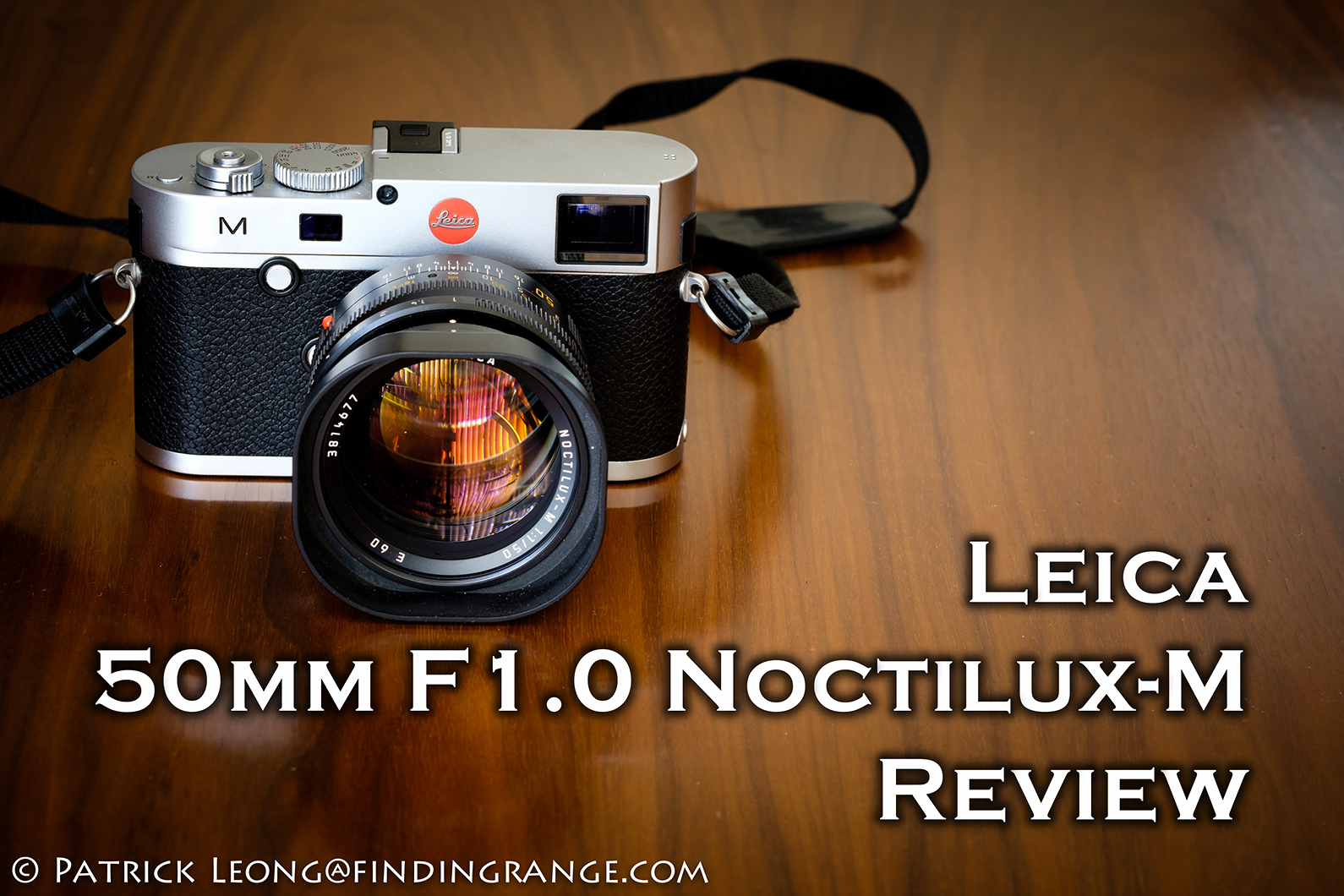
Hey Patrick!
It’s great to see new reviews of Mandler-era lenses! These were and are, great optics that deserve praise, and are a great value.
The Canadian Noctilux has such a special look wide open, especially for closer focusing distance where that sliver of DOF becomes magical. If anything, the Noctilux has become even more usable in this day and age of high quality, post processing apps such as Capture One. The noticeable vignetting can be easily eliminated by programs such as C1.
The non-locking hood was a pain and I really disliked it. I decided to trade mine in for an earlier version which had a separate, vented hood that clipped on (this was about 13 to 15 years ago). While the clip-on hood didn’t retract inadvertently, it could twist off by accident as the clip-on grip wasn’t very secure. Either way, I was left with an unprotected front element, as I preferred not to use a protective clear filter.
Other than that strange quirk, I loved my time with the Noctilux. It’s a unique lens with a unique look wide open. Patrick, thanks again for bringing attention to this great piece of glass 🙂
Hi Marco,
It’s great to hear from you and thanks for taking the time to read my review! Yes, I love the Mandler-era lenses. They are great classic workhorses, and often times, very compact as well. I’m glad I kept a lot of them. And yes, this is a great lens to use in the modern age especially since we can now remove the vignette if we don’t want it with many of the processing software out nowadays. I’m not a big fan of the hood either…the newer one is a lot better. Still, like you said, this is a great lens with a very unique look :). I would love to own one.
Take care,
Patrick
Now i understand what took you so long. This is simply one of your best reviews ever and i really thank you for taking the time and to withstand the cold.
Greetings,
Elderin/Markus
Hi Elderin,
Thank you! That’s really nice of you to say and coming from you that means a lot! I still have to finish the X Typ 113 review…but will try to do that this weekend since Sunday is suppose to warm up. Thanks for taking the time to read my review,
All the best,
Patrick
Hello Patrick,
This review, along with some prior comments have really helped me to understand how special some of these Mandler lenses really are. And you really handled the demands of such skinny DOF extremely well, adding to the character of the photos. It looks like it could be a challenge for folks like me, but Fuji has not ventured into these territories yet – I think some talk of f1.2 but not in this same focal length. I really liked the colors & sharpness of the Times Square & Korba billboard photos also. Sounds like there probably will be a Noctilux in your future! Cheers,
Jed
Hi Jed,
I great appreciate you taking the time to read my review! Your kind words mean a great deal to me but I’m sure you would have no problems focusing this lens. It took a lot of practice but the good news is, I feel like I can focus my other lenses a lot better now :). I hope there will be a Noctilux in my future but that means I better start saving now :). Thanks for stopping by, Jed!
Take care,
Patrick
Hey Jed;
Yes, you’re correct about the Fuji X lenses. They do have an f1.2 in a 56mm, which turns into roughly an 85mm-e portrait lens. So the field of view is, of course, not the same, but depth of field gets close, as it’s still the same focal length.
Surprisingly though, even f1.2 is not quite as magical as f1.0. That extra bit wider makes all of the difference!
Hello Patrick,
This lens look sexy, The build and design too. The out of focus is so short that it is hard to focus during portrait shoot. You might blur out one eye while focusing on another eye. But of course, the out of focus or Bokeh is the unique characteristic of this lens. IF you get the focus right,then the bokeh definitely shine :)….anyway, when are you going to make it yours 🙂
Hi Meng,
Yes, this can be a very hard lens to focus correctly but with practice it does get a lot easier. When will I get mine? Not for a while but it is definitely on my list! For now, I am thinking about purchasing something else. I will be going to Japan in a few weeks, and I’m thinking about buying an old medium format film camera :). I sold my Mamiyas a long time ago but I’ve missed medium format since then.
Take care,
Patrick
Hi Patrick,
I have been looking around the web to find more reviews on this lens, sadly very little. I found your site by accident. I just recently purchased my used M9 and have a couple of Leica lenses; 35mm f/1.4 – 75mm f/2.5 – 90mm f/2.0 “beater”. I have been in photography since 1982 and been a Canon man, started with the Canon AE1 and processed my own photographs. I presently own the Canon EOS 5D mark III with the 24-70mm and 70-200mm both f/2.8 and which are perfect for my use.
I found it pretty easy adapting to the range finder and having to focus manually, as I shot in manual mode on the Canon. The only thing I am concerned about with the Noctilux is how much the lens blocks out the view, but I guess you get used to it, right? The other point I would like to say is going from telephoto lenses to prime lenses was really interesting for me, if I may say. I now take my time and enjoy composing photographs. Perhaps I may miss some photograph opportunities, but that could be down to me being slow on the M9. I do confess I sometimes do get a little irritated, as would not have missed that opportunity had I been using the Canon, but I will give it time.
I have been fascinated by the 50mm f/1.0 and more so the 0.95. I just purchased the Noctilux f/1.0 and waiting for it to be delivered. I hope the combination of the M9 and this lens proves to be as good as, I have been told it is.
I like you simple down to earth review which pushed me over the edge and bought the Noctilux. I am eagerly waiting for it and so I can use it. I just wanted to thank you for a nice insightful review and preparation of what to expect on both fronts; pros and cons.
If you don’t have any objections, i would like to send another update on my findings on the lens later this year.
Cheers
Rouben
Hi Rouben,
Thanks for your kind words, and for taking the time to read my review! It’s great to hear from another rangefinder convert, and it seems like you have a great collection of lenses so far.
Congratulations on your Noctilux purchase. It’s a really nice lens. In terms of the viewfinder blockage, it’s just one of those things that you’ll get used to with time. After a while you won’t even notice it.
As for going from telephoto to prime lens, I completely understand what you mean because I went through it with zooms lol. Since I’ve been shooting with rangefinders all my life, I never owned a zoom until I bought into the Fuji X Series, and the only reason I even bought the zoom was because it was priced favorably with the camera. For me, it was a totally different approach to photography, and even to this day, I still choose my primes over my zoom. There are some that swear by primes and some that think zooms make more sense. In my opinion, both have their place in photography, and it really comes down to what the individual feels most comfortable to shoot with. Of course, I’m sure you would know what I’d choose ;).
I think over time, you’ll get used to shooting with primes, and at least for me, I find that I actually end up getting a lot more keepers. With a prime, I’m more selective, and since I only have one focal length, it means I have to move around a lot, which actually makes me think more about the photo or what type of photo I want. I become more flexible and adaptive. I also feel like I’m more active because I have to actually go in close instead of being on the sidelines. Seriously, you give me a decent prime, and I think I would produce more photos and more keepers than a zoom any day. If I’m not reviewing something, most of the time, I walk around with just my 18mm Super Elmar. Even when I went away to Japan, the only lens I used for that whole week was the 21mm Summilux.
As for an update, of course, I would definitely like to hear what you think! You could even let me know sooner if you want. I hope you enjoy all your new gear, and thanks for taking the time to write me,
Best regards,
Patrick
Good day Patrick,
As promised. Here is my quick and simple summary on the 50mm Noctilux f/1.0. I got my lens on 13 July 2016. So far I can confirm that it really is a superb lens, after taking over 500 photographs with it already. I really am enjoying using it. As you know I own several Leica lenses and by far the most fun and durable lens is the Noctilux. Due to the size the lens does obstruct and take away some of the vision, but you do get used to it and adapt to this fairly quickly. In night photography it is seriously outstanding. The only issue I have with the lens and which is primarily my own fault, I do find it hard to focus and I am slowly getting there. People complain about the weight of the lens, but it is not that bad really. Perhaps I am used to lugging around a Canon DSLR and a 70-200mm all the time and I never complained, so this is nothing in comparison by far. The build quality is great, but the built in lens hood is made of plastic and does not lock when you extract it – which can be a bit annoying. If this is the only fault, then I recommend anyone to buy it.
To conclude, I feel that I have invested in a little gem for life, which works wonders at night; which is when I generally like to take photographs. I have got to the extent that I may be tempted to sell a couple of my other lenses I own and as I may not be using them that often.
Kind regards
Rouben
Hi Rouben!
It’s great to hear you’re enjoying it! It’s one of my all-time favorite lenses. I’m also glad to hear that you’re using it for night shooting. While it’s great to see portraits with some amazing bokeh, at the same time, the Noctilux is a lens designed for the night. It’s good to hear it’s being used for that as well.
As for some of the issues that you mentioned, I wholeheartedly agree. For instance, I don’t know why the lens hood was made out of plastic, and a locking hood would definitely be nice but as you said, with a lens like this, that’s only a minor issue. As for focusing, it will definitely get easier as well. Weight-wise, it’s really not that bad considering it’s an f1 lens. If you need the extra light gathering capabilities, it comes with the territory, and truthfully, maybe it could’ve been made out of lighter materials but then again, who want’s a Leica lens with plastic parts, right? The point is, I found it very well-balanced on an M body.
In time, you may very well ditch your other lenses. One of the reasons why I love using the M system is because it really made me concentrate on the essentials. At this point, I would be happy with just an 18mm and a 50mm lens. I found both those lenses cover most of what I need. In fact, when I carry more with me, sometimes I find it makes me a little indecisive as to which is best to use, and actually slows me down in the process. Plus, carrying less means I can navigate the streets with more ease, and means I won’t have a sore shoulder at the end of the day ;).
Thanks for sharing your feedback. I hope to hear from you again when you’ve had even more time with it.
Best regards,
Patrick
Hi Patrick,
As you know I have owned the Noctilux for several weeks now. The lens has grown on me and I presently do not use any of the other lens as much. However from time to time, I do use the 35mm f/1.4 for street photography and the 90mm “Silver Beater” for portraits – when I am not able to get exactly what I am after with the Noctilux.
The Noctilux works perfectly and it is 100% reliable. I now use it during the day, which previously only used at night. The only issue I still have, from time to time is the focusing, but that is my fault. The only other minor issue is the weight of the Noctilux, but you really do get used to it.
The real issue I have is not with the lens, but the small screen on the Leica M9. It is so small and often I can not see the image properly and in order to double check it is up to scratch, although now I hardly check this screen and I am usually happy with the final result.
What has happened to me, is that I now take my time focusing, composing and enjoying the photography more. Consequently my photographs have improved vastly using the Noctilux especially. I of course take far less photographs, but the results are stunning.
I will be taking the Noctilux to Cuba and Europe over the coming months and I feel really confident it will perform perfectly.
I hope this continued review ‘update’ will also push others to spend that little more and purchase one of the best lens available. I have not tested the f/0.95 and am sure it is pretty good also.
The Noctilux is a delight to use. I am really happy with it.
Take care
Rouben
Hi Rouban,
Sorry for the late reply! I got back from vacation, and I was more busy than I expected catching up on things :). It’s great to hear that you enjoy the Noctilux so much. It is truly a one of a kind lens, and once you got the focusing down, you’re pretty much set for anything. I’ve wanted one for so long, and hearing about your experience with the lens over time is making me wonder if maybe I should cancel my Hasselblad X1D pre-order, and spend the money on a Noctilux ;).
It also sounds like you have the perfect set up for your M system. With the 35mm, the Noctilux, and the 90mm, you’re bases are pretty much covered. The only lens you may want to purchase in the future, if you feel like you need it, is maybe a 21mm or an 18mm. If you like the Noctilux, I’m sure you’ll equally enjoy Leica’s wide angle selection. Leica truly makes some of the best wide angle lenses out there.
Please keep me updated after your trips, and let me know how the Noctilux worked out for you. I’ve always wanted to visit Cuba :). Thanks for letting us know about your experience with the lens. I hope to hear from you soon!
Best,
Patrick
Hi Patrick,
I have always said that I am not been entirely happy with the M9, particularly the small LCD screen at back of camera and the general light issues I have experienced / experiencing with M9. I have changed my camera now to a Leica Monochrom Typ 246. I realise that this shoots only B&W which is no issue for me, as I tend to photograph B&W anyway. The Typ 246 is absolutely amazing. Now I have the EVF2 with the Typ 246 and the matter of focusing is no longer a problem, as previously stated in my comments past. There are no reviews on the Leica EVF2 or I could not see / find any on websites. It took me a couple of days getting used to the EVF2 and now I have no issues focusing, especially while using the Leica 50mm Noctilux f/1.0.
I just wanted to share my experience with you and other readers, on how they can focus more confidently while using the Noctilux f/1.0; EVF2 is the answer, well for me it is. Although I must say, I can see why some people may disagree with my above comments. It is just a matter of getting used to to be honest. I am really happy with the Typ 246 and the Noctilux f/1.0 while using the EVF2.
I am off to Europe mid October for 6 months, Cuba end of October and Israel beginning of November.
All the best,
Rouben
Hi Rouben,
It’s great to hear from you again! Sorry to hear about your M9 issues but congratulations on purchasing the M Typ 246! The Monochrom Leicas are fantastic! The resolution from those cameras are incredible. Some like the CCD sensor in the M9 but personally, I’m more of a fan of the M 240/246 sensor. Plus, I like the more modern conveniences like the bigger and better screen, for example. As for the EVF2, I wrote a mini review for it a while ago:
http://findingrange.com/2013/06/06/leica-m-typ-240-review-part-2-leica-evf2/
It was part of my M 240 review, so the review is a few years old, and a lot has changed since then. It can be a huge help, especially with the focus peaking.
It sounds like you’ll have some fun times ahead with your trips. It’ll be great to test out your new M Typ 246, especially with that Noctilux attached :). Keep in contact, and let us know how it goes from time to time!
Best regards,
Patrick